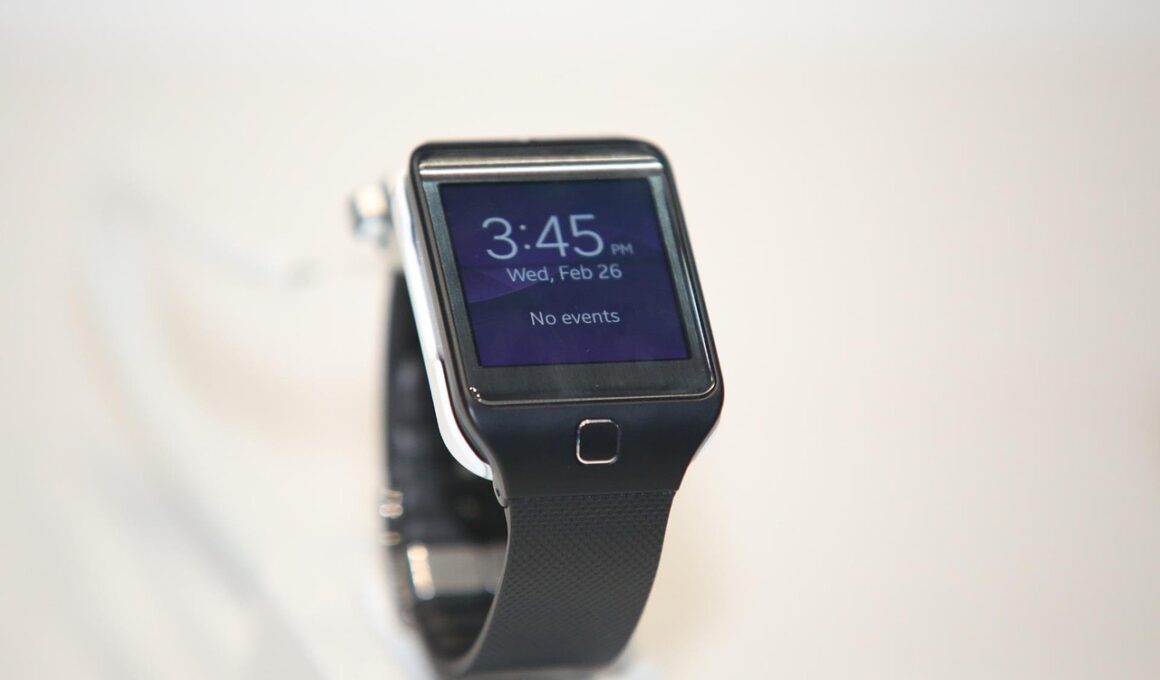How Wearable Technology Motivates Fitness Enthusiasts
Wearable fitness devices have revolutionized the way fitness enthusiasts train and track their workouts. With state-of-the-art technology, these devices help users monitor their progress efficiently. Wearables come equipped with features such as heart rate monitoring, GPS tracking, and activity recognition, enabling users to gain insights into their performance. As fitness becomes more data-driven, individuals rely on these gadgets to stay motivated. The motivational benefit of wearables is evident through constant feedback, which assists users in setting and achieving fitness goals. Many popular brands like Fitbit and Apple offer wearable technology that syncs with mobile applications, allowing users to analyze their fitness data over time. For anyone serious about improving their health, integrating a wearable device into their routine is a crucial step. The capability to visualize progress fosters a competitive spirit, whether it is against oneself or friends. Additionally, adherence to fitness plans can increase remarkably with this technology. Incorporating wearables not only enhances accountability but also brings a fun approach to achieving personal fitness milestones. Ultimately, making fitness more engaging can lead to lasting lifestyle changes that promote better health and well-being.
Wearables encourage social interaction through fitness challenges, allowing users to connect with one another. Engaging in social challenges, such as step competitions, motivates individuals to push their limits. The dynamic creates a support network that is beneficial for those on their fitness journey. Communities built around fitness wearables, namely groups in apps like Strava, provide inspiration and camaraderie. Sharing updates on achievements and receiving encouragement can significantly enhance motivation levels among users. It is especially empowering to join a group of like-minded individuals who share similar fitness goals. They can uplift and motivate each other towards healthier lifestyles. Furthermore, many wearable devices provide access to online forums and networking platforms related to fitness, connecting users beyond their local communities. Social media also plays a crucial role, enabling enthusiasts to broadcast their fitness journey to online audiences. The joy of celebrating milestones, both big and small, can create a significant push to remain consistent. As such, wearable technology not only fosters a healthy competitive spirit but also nurtures friendship, making the entire fitness experience much more enjoyable.
Customization and Goal Setting
One of the remarkable features of wearable fitness devices is the ability to customize training programs and goals. Users can set specific objectives such as running a distance, achieving a step count, or burning calories within a certain timeframe. Customization elevates the motivational aspect of fitness training significantly. This personalized approach means that users can tailor their workouts to fit their unique lifestyles, preferences, and systems. The flexibility offered by wearables ensures that every user can adapt their fitness journey according to their requirements. These options keep users engaged and dedicated to achieving their targets effectively. Additionally, many wearable devices allow tracking of calories burned, dietary intake, and hydration levels which further supports users in achieving their fitness goals. By providing performance metrics in real-time, wearables simplify the evaluation of workouts. This continuous tracking leads to a deep understanding of personal fitness levels and fosters commitment. As goals are achieved, users are inclined to set higher objectives, thereby creating a transformative cycle of self-improvement that can yield long-term benefits.
Wearable devices often utilize gamification to make fitness both fun and challenging. This approach transforms mundane tasks into exciting challenges that users look forward to completing. Many devices offer rewards in the form of badges or points for reaching fitness milestones, adding an element of play to the workout regime. This method not only increases user engagement but also encourages them to strive harder. Gamification effectively caters to the human desire for achievement and recognition, making workouts feel less like a chore and more like a prized pursuit. Additionally, interactions with these platforms often simulate gaming dynamics, such as leveling up or unlocking features. This trend corresponds to increased user retention, as people enjoy improving their skills or competing with others. With compelling feedback loops, wearables provide a consistent flow of motivation through accomplishment. The motivational utility of such devices lies in their ability to counter fatigue and stagnation, keeping workouts interesting. As users unlock features and achievements, they experience the joy of progress, leading to sustained engagement with their fitness routines.
Integration with Health Monitoring
Wearable technology goes beyond fitness tracking by incorporating advanced health-monitoring capabilities. These devices can measure vital signs, sleep quality, and stress levels, contributing to comprehensive health and wellness monitoring. For fitness enthusiasts, understanding their overall health status is pivotal in achieving exercise-related goals. Wearables provide real-time data on heart rate variability, which is essential for optimizing workout intensity and avoiding overtraining. Furthermore, many advanced wearables accommodate insights on recovery stats, enabling users to understand when it’s time to rest or push themselves further. This data-driven approach to health monitoring promotes informed decision-making regarding fitness routines. Additionally, some devices include notifications for sedentary behavior, prompting users to move and remain active throughout the day. With such features, individuals can foster a more balanced lifestyle that emphasizes both activity and recovery. By tracking health metrics, users become more aware of the essential relationship between fitness and overall wellness, catalyzing better habits. The intuitive technology in wearables ensures enthusiasts are not merely motivated but also educated on how their actions impact their health.
Privacy and data security are critical concerns surrounding wearable technology. As more people wear fitness devices that track personal health information, the importance of securing this data becomes paramount. Users need to be aware of how their information is collected and stored by wearable manufacturers. Transparency about data usage is essential for building trust. Reputable brands often implement stringent security protocols to protect user data from unauthorized access. Users looking to leverage technology for fitness should research and choose products from companies that prioritize user privacy. Understanding privacy policies can help users make informed decisions about their wearable tech. Additionally, regularly updating device software and using secure passwords can enhance safety in usage. As tech-savvy consumers, fitness enthusiasts must demand clarity regarding their personal data to minimize risk. Emphasizing the importance of data ethics in wellness tech will assist in shaping a future where users enjoy the advantages of wearables without compromising their security. Overall, being proactive about data privacy not only enhances user experience but augments motivation, creating a more empowered and confident user base.
The Future of Wearable Technology in Fitness
The future of wearable technology is promising, showcasing innovative advancements that are set to redefine fitness tracking. Emerging technologies, such as machine learning and artificial intelligence, may offer personalized insights and recommendations based on user behavior. This could lead to even more tailored fitness plans, adapting dynamically as users progress and change their routines. As technology advances, we may witness an increase in smaller, more versatile devices, ranging from smart clothing to advanced sensors. These developments will likely enhance the user experience by providing seamless monitoring and integration into daily life. Furthermore, collaboration between fitness apps and wearables will become more sophisticated, leading to better compatibility and features. Predicting trends suggests that wearables may also incorporate more motivational elements, such as virtual coaching and augmented reality fitness environments. This evolution will inspire fitness enthusiasts to engage in challenging and fun workouts. As the fitness landscape continues to flourish, the role of wearables will undoubtedly expand, facilitating personalization and innovation. With ongoing advancements, wearable technology will remain a key player in motivating fitness enthusiasts and empowering them in their health journeys.
In summary, wearable fitness devices have fundamentally transformed the fitness landscape, allowing enthusiasts to monitor their activities more effectively. The motivational aspects of these technologies cannot be overstated, as they support social interaction, personalized goal setting, and health monitoring. By providing engaging experiences through gamification and premium data analysis, wearables keep users inspired to pursue their objectives. Addressing privacy concerns will be vital as technology continues to evolve, ensuring that enthusiasts can confidently track their progress. The future seems bright for wearables, with innovations promising to further enhance user engagement and motivation in fitness. As individuals continue to embrace these devices, the potential for improved health outcomes and lifestyle changes is tremendous. Ultimately, wearable technology empowers fitness enthusiasts to attain their goals with greater success. The combination of practical features and motivational support positions these devices at the forefront of modern fitness culture. The ongoing development of wearables suggests an exciting evolution of how people engage with fitness and health aspects. As a society increasingly prioritizes physical wellness, wearable technology will be essential in bridging the gap between health aspirations and reality.


